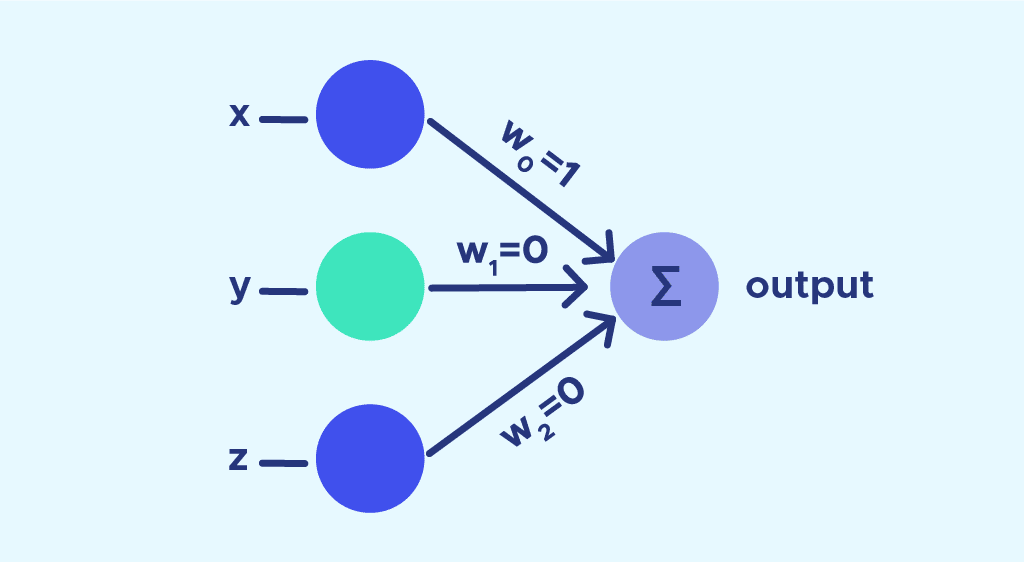A Perceptron is an artificial neuron, essential for Deep Learning neural networks. Discover its principle, its use, and its importance in Data Science.
To understand what a Perceptron is, we must first understand the concept of artificial neural networks. As you probably know, the human brain is made of billions of neurons.
These neurons are interconnected nerve cells, and allow the processing and transmission of chemical and electrical signals. Dendrites are branches that receive information from other neurons. The cell nuclei process the information received from the dendrites. Finally, synapses serve as connections between neurons.
Artificial neurons try to mimic the functioning of brain neurons. It is a mathematical function based on a model of biological neurons. Each neuron receives data, weighs them, calculates their sum and produces a result through a non-linear function.
An artificial neural network consists of multiple artificial neurons. The results of the computations are transmitted from one neuron to another, and each neuron maintains an internal state called the activation signal. The neurons are linked together by connection links, through which information about the input data flows.
In each neural network, we distinguish the input layer, the output layer, and different hidden layers. The data is transmitted from one layer to the other.
What is the Perceptron?
The Perceptron was invented in 1957 by Frank Rosenblatt at the Cornell Aeronautics Laboratory. Based on the first concepts of artificial neurons, he proposed the “Perceptron learning rule“.
A Perceptron is an artificial neuron, and thus a neural network unit. It performs computations to detect features or patterns in the input data. It is an algorithm for supervised learning of binary classifiers. It is this algorithm that allows artificial neurons to learn and process features in a data set.
The Perceptron plays an essential role in Machine Learning projects. It is massively used to classify data, or as an algorithm to simplify or supervise the learning capabilities of binary classifiers.
Recall that supervised learning consists in teaching an algorithm to make predictions. To achieve this, the algorithm is fed with data that is already correctly labeled.
What’s the Perceptron Learning Rule?
According to the Perceptron Learning Rule, the algorithm automatically learns the optimal weight coefficients. The characteristics of the input data are multiplied by these weights to determine whether a neuron “lights up” or not.
The Perceptron receives multiple input signals. If the sum of the signals exceeds a certain threshold, a signal is produced or, conversely, no output is produced.
In the context of the supervised learning method of Machine Learning, this is what makes it possible to predict the category of a data sample. It is therefore an essential element.

The function of the Perceptron, how to interpret the result?
In reality, the Perceptron is a mathematical function. The input data (x) is multiplied by the weight coefficients (w). The result is a value.
This value can be positive or negative. The artificial neuron is activated if the value is positive. It is therefore activated only if the calculated weight of the input data exceeds a certain threshold.
The predicted result is compared with the known result. If there is a difference, the error is back propagated in order to adjust the weights.
Single layer vs. multi-layer perceptron
There are two types of Perceptron:
- A single layer Perceptron can learn only separable linear functions.
- A multi-layer Perceptron, also known as a feed-forward neural network, overcomes this limitation and offers superior computational power. It is also possible to combine several Perceptrons to create a powerful mechanism.
Perceptron and Neural Networks
In short, a neural network is a set of interconnected Perceptrons. Its operation is based on multiplication operations between two important components: the input and the weight.
The sum of this multiplication is passed to an activation function, determining a binary value of 0 or 1. This is what allows the data to be classified.
How to learn how to use the Perceptron?
To learn how to master the Perceptron, and understand everything about Machine Learning, Deep Learning and Neural Networks, you can opt for DataScientest’s training courses.
Machine Learning, and the different algorithms and methodologies, are at the heart of our Data Analyst and Data Scientist trainings. We also offer a Machine Learning Engineer course to learn how to put models into production.
These different courses will enable you to acquire all the skills required to work as a data analyst or data scientist. In addition to Machine Learning, you will also learn to master Python programming, databases and Data Visualization.
All of our courses adopt an innovative “Blended learning” approach, halfway between classroom and distance learning. They can be done in Part-time education, or in bootcamp in just a few months.
Learners receive a diploma certified by the Sorbonne University. Among our alumni, 93% found a job immediately after graduation. Don’t wait any longer, and discover our training courses!










